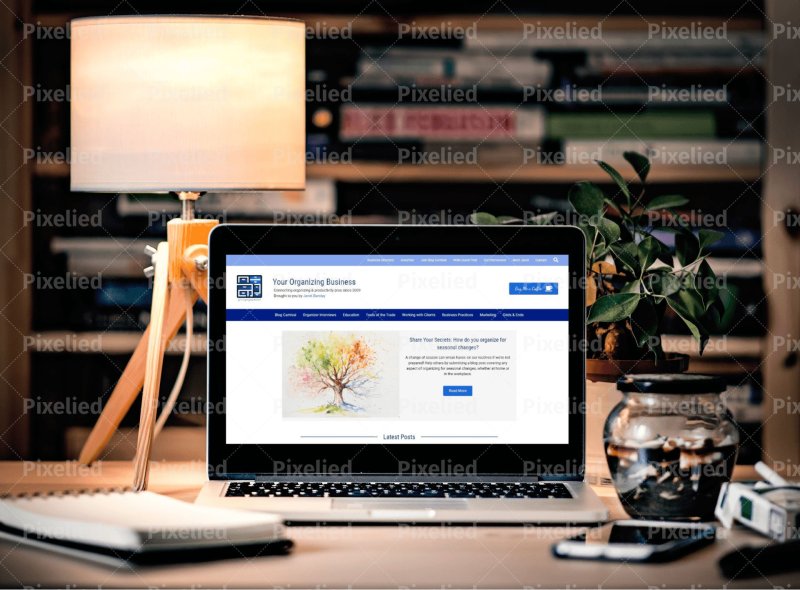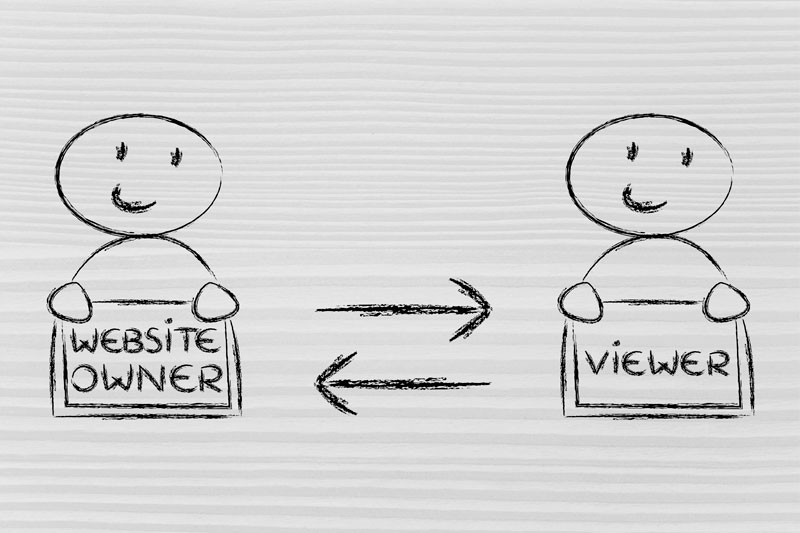How to Create an Effective Contact Page

This page may contain links to Amazon.com or other sites from which I may receive commission on purchases you make after clicking on such links. Read my full Disclosure Policy
In this third post in my series about the key pages of your website, I’ll be discussing the contact page. In case you missed them, the previous posts were:
- Is your website giving you strong results? Creating an Effective Homepage or Welcome Page
- Creating an About Page that Clicks
Many businesses display their phone number and/or email address in their header or footer so visitors can find it easily no matter which page they’re on. That’s a smart practice, but you should also consider having a dedicated Contact page.
Read on to learn why it’s important, find out what you should include, and see some great examples.
Why you need a Contact Page
You must make it as easy as possible for prospective clients to contact you. Those who don’t spend much time online may not think to look at the header or footer, and instead seek the word “contact” in your menu.
A separate Contact page also provides space for you to include information over and above simply an email address and/or phone number. This can save you and your website visitors time and ultimately reduce the number of calls or emails you have to handle.
In addition, giving people a variety of ways to reach you will help establish your credibility and the all-important “know, like and trust” factor.
What to put on your Contact Page
Your Contact page should include all of the ways you are willing to be reached.
I’ve listed below various types of contact information. You don’t need to provide all of the options, but I recommend offering more than one, as do other experts.
The more information you can provide, the more secure you make customers feel because if something goes wrong with a product or service, they know how to reach you.
Source: Afraid to Put Your Contact Info on Your Site? You Could Be Losing Sales, Joan Stewart, Entrepreneur.com
Telephone Number(s)
As a general rule, you only need to list your primary phone number, but if you have separate numbers for different locations or departments, it makes sense to list those as well.
If your phone is only answered during regular business hours, your potential clients will probably appreciate knowing your schedule.
I’ve chosen not to include my phone number on my Contact page for various reasons, one being that I don’t answer the phone while I’m working on a project. Rather than playing telephone tag with someone, I supply a link to my appointment scheduler so we can plan to speak at a mutually convenient time.
Email Address(es)
As in the case of phone numbers, you can either display a central email address only, or provide email addresses for each department, as shown on the Professional Organizers of Canada website.
When you publish your email address online, be aware that you are exposing it to spammers. There are a number of ways to protect it, including:
- Spell it out, e.g. info AT janetbarclay DOT com. This works, but it’s not at all user-friendly. You want to make it easy for people to reach you, remember?
- Use a plugin such as Obfuscate Email to prevent your email address from being harvested by spammers.
- Use a contact form instead of allowing visitors to email you directly. There are some advantages to this approach, which I’ll go over shortly.
If you post a contact form, keep in mind that forms can be challenging to complete on a mobile device, and some people simply don’t trust that a human will receive and respond to their message.
To help alleviate concerns and eliminate duplicate messages, indicate when they can expect to receive a reply, and be sure to provide at least one other method of contact.
Location(s)
If you work within a specific region, your Contact page should mention the geographic locations that you serve. This lets prospective clients know that you’re in their area and increases the likelihood of your site coming up in the results when they include this information in their search query.
If you have a brick-and-mortar business, provide your full address and possibly a map – ideally one that will allow them to look up directions from their own location. You should also include your hours of operation.
If you have multiple locations, you’ll want to list all of them, possibly necessitating a Contact page for each one.
Other Options
These days, we’re not restricted to the traditional methods of communication. If you welcome inquiries via live chat, Skype, or other online channels, these can also be listed on your Contact page.
Contact Forms
As mentioned above, a form allows potential clients to contact you without the need to publicize your email address. That’s not the main benefit, however.
You’ve probably received emails along the lines of “I would like to know more about your services.” With no information about the client’s situation, requirements, location or budget, you have no choice but to email them back with questions. It may take several emails back and forth to actually schedule an appointment or to simply discover that it’s not a good fit.
A contact form streamlines the process by allowing you to ask key questions up front, even if it’s as simple as “When is the best time to call you?” Well-worded questions also help the client to explain their needs more effectively. Just don’t make the mistake of asking so many questions that people get frustrated or feel that you’re being intrusive!
There are many different tools available, both free and paid, to create contact forms. My favorite is the Gravity Forms form builder plugin for WordPress, which I’ve been using for over 10 years on my own websites and my clients’. Here are just a few of the features I appreciate:
- It integrates with email marketing services such as MailChimp, AWeber, and iContact, so people can sign up for your list simply by checking a box on your contact form.
- You can set up conditional fields, causing different questions to appear based on their answers. For example, on my Organizer Interview Questionnaire, newer organizers who have been in business less than 3 years will see different questions than those with more experience.
- You can design automated and customized email responses to confirm that the form entry has been sent to you.
- You can also customize the message that appears on the screen once the form has been submitted, or even have a different page come up.
Personalize your Contact page
Once someone is interested in contacting you, do your best to keep them engaged. Your Contact page doesn’t have to be boring!
Customizing your contact form as I described above is a good start, but there’s much more you can do.
Don’t be afraid to show some personality! If the rest of your site is casual and light, use the same tone on your Contact page.
Including a photo or yourself or the staff member who’ll be responding to their inquiry can reinforce the fact that they’re connecting with a real person, not just sending words out into cyberspace.
Remember: your Contact page isn’t just to provide a tool for people to get in touch with you! Your ultimate goal is to facilitate connecting with potential clients so you can land their business quickly and easily.
Other Considerations
Even with a carefully crafted contact form, you may find yourself answering the same questions over and over. Filter these out by placing some Frequently Asked Questions (or a link to your FAQ page) at the top. The more someone knows about you and your business up front, the more likely they are to end up doing business with you.
Some people may click through to your Contact page before they’re actually ready to get started. Instead of letting them slip through the cracks, display links to your active social media profiles and/or a sign-up form for your mailing list to keep you top of mind when they’re ready to move forward.
Next Steps
- Watch this video to see some uniquely effective Contact pages.
- Study your own Contact page and think about ways to make it more effective.
- Leave a comment sharing what you like to see on a Contact page.
- Schedule a telephone call or Zoom session for expert help with your Contact page — I’ve cut the prices in half until April 30th.
Illustration by NiroDesign DepositPhotos

Janet Barclay
I eliminate stress for my clients by hosting, monitoring, and maintaining their WordPress sites so they don’t have to worry about security, downtime or performance issues. When I’m away from my desk, I enjoy reading, photography, cooking, watching movies, drinking tea, and spending time with my family.




Great review, Janet! Now I’m off to compare my own Contact page, item by item, and see what needs updating.
As you know, I recently redesigned my website. We spent a lot of time noodling the contact page, for exactly the reason that Kori described in the terrific video you shared. Most of us have websites so that people will get in touch with us. And while a great home page can encourage or discourage viewers to dive deeper, the contact page is the place that THE action spot.
One of the things that took me a long time with the website revamp, was finding the right “room” images to include on each page. We added enhanced the rooms with some line drawings to add some fun and whimsy. The contact page ended up being one of my favorite rooms because it feels inviting- a place I’d love to sit down and chat with a friend.
The first contact page that Kori showed had a mini animation, which I loved. It was simple, but added, as she said, “some sparkle” to the page. It’s something to consider for my page. Although perhaps instead of an animation, a short video clip would work. I use other videos throughout my site and no animation, so a video feels more in the same language.
Linda, your contact page is fabulous – it reflects you very well!
Thank you so much for saying that, Janet. Being the web design expert that you are, AND that you also know me well, I am so happy that you gave that enthusiastic response. Grateful.
Okay, I think I have the most boring Contact Page on the planet. I never gave it any thought. Thanks for inspiring ideas. I will add it to my list of “what I want on my new website.” Now if I could just go to work and generate a little more revenue to pay for a new website, that would be great 🙂
Great information! Looking at my contact page right now.
Excellent information, Janet. I found adding a form at the bottom of each service worked for me on my admin services blog. This way, it minimizes the spam mail in my inbox. I hid the contact me page altogether, so visitors do not send me nonspecific inquiries.
I totally get your reasoning. I would just worry that someone who has already met you or been to your website and now wants to purchase your services might go there looking for a way to reach you, and they might not think to go to the service page. Just my two cents worth!
I don’t have a contact page. As you stated at the beginning of the post I put my contact info on the header and footer. I’ll rethink that.
It’s very exciting to see so many of you being inspired by this series! Thank you for your comments.
Contact pages are really important. I cannot tell you how many times I’ve tried to reach someone and spent more time than was necessary. That’s because finding the contact page is so unclear.
I do have a contact form and I probably should give it up. Lately all I’ve been receiving are sales calls promising everything under the sun.
That’s so annoying! Before you scrap that form, I’d ask your website manager to add a captcha. It won’t eliminate spam altogether, but it will stop a lot of it.
Super-informative, and I’d write more, but now I have to go off and figure out what needs to be changed on my ancient contact page! Other than ad hoc changes that relate to response time (like when I’m at conference), I’ve barely changed my contact page in more than a decade, maybe two! Yikes!
Julie, your Contact page has more details than many I’ve seen! You’re very thorough in letting people know what to expect and what to do if they don’t think they’ve heard back from you.
Thanks for sharing. I really didn’t think about the importance of the contact page before. Great job! Impressive!
Happy to help!